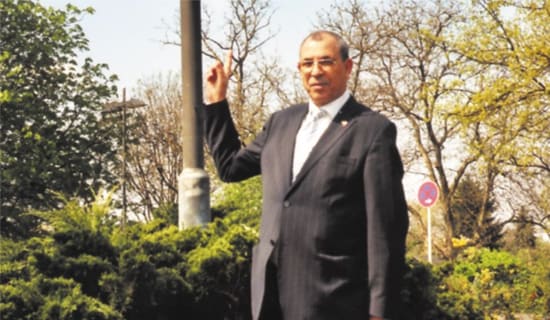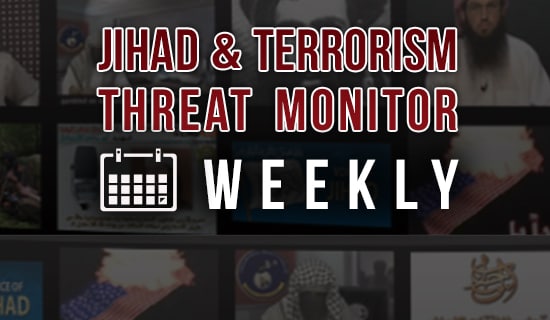On July 1, three suicide bombers attacked the shrine of Sufi mystic Syed Ali Hajwairi, in Lahore, killing more than 40 people and wounding 175 others.[1] The 11th Century Sufi mystic, who is commonly known as Data Gunj Bakhsh, has a large number of followers across South Asia, especially in Pakistan and India. The attack, seen as an assault on people's Islam as expressed in Sufism, has once again focused the spotlight on militant organizations based in Punjab, of which Lahore is the capital. According to a report, the Ghazi Force, a relatively new militant organization, could be behind the attack.[2]
Commenting on the Data Gunj Bakhsh shrine attack, Pakistani Interior Minister Rehman Malik stated that the attackers are "worse than animals and infidels" and, pointing out those behind the attack, noted that the Sipah-e-Sahaba Pakistan, Lashkar-e-Jhangvi, the Tehreek-e-Taliban Pakistan, and Al-Qaeda are working together.[3] The Sipah-e-Sahaba Pakistan (SSP), a former religious-political party that was outlawed due to its campaign of violence against Shi'ite Muslims, is considered to be the mother of almost all Sunni jihadist organizations in Pakistan, including Lashkar-e-Jhangvi and Jaish-e-Muhammad. In April, Pakistani intelligence officials in Karachi indicated that the SSP and Lashkar-e-Jhangvi had formed two smaller organizations: Lashkar-e-Islam and Ghazi Force.[4] However, the Ghazi Force may have been established more than a year ago.
Over the past year or so, Ghazi Force has attracted the attention of Pakistani security agencies in connection with its role in various militant attacks. The organization was formed to avenge the deaths of Abdur Rashid Ghazi and dozens of his armed students during the 2007 military operation in the Red Mosque of Islamabad. The army operation was ordered by the then-military ruler General Pervez Musharraf after the radical students of the Jamia Hafsa madrassa for women and Jamia Faridia male madrassa, both controlled by Red Mosque's leaders Abdur Rashid Ghazi and his brother Maulana Abdul Aziz, occupied a government building, challenging the state of Pakistan, and began enforcing Islamic Shari'a in Islamabad.[5]
The army operation in Red Mosque, where top generals of the Pakistani military have offered their weekly Friday prayers over the years, caused an outrage among the jihadist organizations in Pakistan and their sympathizers in Pakistani society. General Musharraf was forced to appear on national television to explain the necessity for the army operation. The top Al-Qaeda leadership also reacted against the operation. In a 24-minute video address, Al-Qaeda leader Osama bin Laden called upon Pakistani soldiers to desert the Pakistani Army and "eliminate" General Musharraf, adding: "The storming of the Red Mosque in Islamabad was a saddening incident... which revealed his determination to continue [serving as] a loyal and obedient supporter of America against the Muslims... We must [therefore] launch an armed [struggle] against him and eliminate him... Shari'a commands [us] to kill apostate leaders, and a Muslim must not question the commands of Allah... Know that when jihad becomes an individual commandment incumbent upon every Muslim, as it is today, there are only two options...: either [to wage] jihad for the sake of Allah, which is the Prophet's way... or to avoid [waging jihad], which is the way of sinners and hypocrites..."[6]
In the aftermath of the Red Mosque operation, there have been concerns in Pakistan that the radical students of the Jamia Hafsa and Jamia Faridia madrassas could formally join the jihadist movements in Pakistan. The students of these madrassas have marked the anniversary of the military operation in recent years. According to a report in the Pashtu-language newspaper Wrazpanra Wahdat, the female students of the Jamia Hafsa students organized a ceremony to mark the second anniversary of the operation in July 2009 and banners inscribed with anti-military slogans were put up in the vicinity of the Red Mosque.[7] During 2009, various Pakistani courts began acquitting Maulana Abdul Aziz, who had been charged on various counts in connection with Red Mosque episode. It was also during 2009 that the Ghazi Force's name began appearing in the Pakistani media, especially following arrests of militants from madrassas in Islamabad.
In June 2009, Islamabad's Senior Superintendent of Police Tahir Aslam disclosed the arrest of one militant named Fidaullah, noting that he had established a new militant network with the name of Ghazi Force.[8] In July, police in Islamabad arrested two militants: Mohammad Ovais and Obaidullah Khan. A report quoted unidentified police sources as saying that the two admitted that they had sent a dozen youth from Islamabad, Rawalpindi, and Pakistani Kashmir to the Pakistani tribal areas for militant training.[9] Interestingly, Mohammad Ovais, who came from the Poonch district in Indian Kashmir, and Obaidullah Khan – a computer engineering graduate – worked for one militant commander called Tipu, who was "affiliated with a militant group named Ghazi Force."[10]
Following the arrests of a number of militants from the Pakistani capital who revealed that they belonged to the Ghazi Force, the Lahore-based newspaper Daily Times wrote an editorial in October 2009, titled "Islamabad: Terror Epicenter?"[11] The editorial observed: "Examining the spoor of terrorists closely, security agencies are increasingly worried about Islamabad being the epicenter of terrorism. Acting on the basis of this pointer, there was a dragnet taken across the numerous madrassas in the capital city, only to find that all was fine with them. It is not known if the mosques — where sermons laced with politics are routinely given — were also under observation. But an outfit named Ghazi Force is being mentioned..."[12] In late-October, the Dawn newspaper also published a report, titled "Lal Masjid [Red Mosque] is Still Training Militants?"[13] The report noted that police officers investigating terrorist attacks in Islamabad suspect the involvement of Ghazi Force, with its Emir being identified as Niaz Raheem aka Bilal.[14]
In November 2009, the Pakistani security forces arrested one Jamsheed aka Tahir, a former student of the Jamia Faridia, in connection with the October 5 attack inside the office of the World Food Program in Islamabad. According to a Pakistani police official, Tahir belonged to the Ghazi Force, which was identified to be working from its base in the Pakistani tribal district of Orakzai Agency.[15] From Tahir's statement, it emerged that the headquarters of the Ghazi Force is in the Dabori village of Orakzai Agency.[16]
Azam Tariq, the spokesman of the Tehreek-e-Taliban Pakistan, has denied the Taliban's involvement in the shrine attack.[17] However, this denial may be a tactical move to overcome people's anger against the Taliban. Just a week before the July 1 Data Gunj Bakhsh shrine attack, a Pakistani intelligence report warned that jihadist organizations are actively recruiting youth in jihad and are "publicly raising funds" in the Punjab province.[18] Noting that at least 17 jihadist groups are raising donations through religious congregations, certificate award ceremonies and meetings held in the name of social welfare, the report noted that "the most active among these groups... [is] the Ghazi Force."[19] The intelligence report also noted that the Ghazi Force has "close working relations" with the Tehreek-e-Taliban Pakistan.[20]
*Tufail Ahmad is Director of MEMRI's Urdu-Pashtu Media Project
[1] Daily Times, Pakistan, July 2, 2010. Some news reports indicated that the attacks were carried out by two suicide bombers only.
[2] Daily Times, Pakistan, July 2, 2010.
[3] Roznama Jang, Pakistan, July 3, 2010.
[4] Daily Times, Pakistan, April 16, 2010.
[5] Abdur Rashid Ghazi was killed in the army operation, while his brother Maulana Abdul Aziz was caught fleeing in a burqa.
[6] The MEMRI Blog, September 21, 2007. The video was posted by Islamist website ekhlaas.org.
[7] Wrazpanra Wahdat, Pakistan, July 8, 2009.
[8] www.thenews.com.pk, Pakistan, June 1, 2009.
[9] The News, Pakistan, August 21, 2009.
[10] The News, Pakistan, August 21, 2009.
[11] Daily Times, Pakistan, October 26, 2009. The text, especially spelling, has been lightly edited for clarity.
[12] Daily Times, Pakistan, October 26, 2009.
[13] Dawn, Pakistan, October 25, 2009.
[14] Dawn, Pakistan, October 25, 2009.
[15] www.thenews.com.pk, Pakistan, November 20, 2009.
[16] The News, Pakistan, November 21, 2009.
[17] The News, Pakistan, July 3, 2010.
[18] The News, Pakistan, June 24, 2010.
[19] The News, Pakistan, June 24, 2010.
[20] The News, Pakistan, June 24, 2010.








